China’s creeping crypto-colonialism: Sovereignty of small neighbors in danger
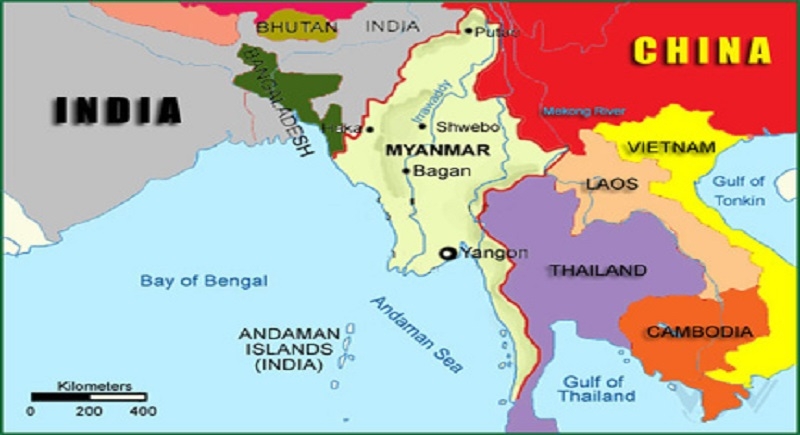
China’s Belt & Road Initiative is ostensibly aimed at helping out lesser developed countries of Asia by building infra-structure and connectivity for them. However, it is associated with certain symptoms that are ominous. China has achieved technical superiority several notches above its surrounding neighbors, except South Korea, and second only to Japan in Asia; but in size, in terms of population and area, it is a behemoth compared to little S Korea or Japan. So its demand for raw materials, such as oil, gas and minerals, is almost insatiable. China has accumulated enormous amount of surplus capital and its demand for investable projects and market for its saleable goods is also insatiable.
United States, which was one huge market for China’s consumer goods, now turning protectionist, China is looking for greater market penetration within the countries of Asia and Africa. At this juncture comes the Belt & Road Initiative of President Xi Jinping.
These conditions remind me of President James Monroe’s USA in the first quarter of the 19th century when he pronounced his infamous Monroe Doctrine, declaring newly independent countries of Latin America out-of-bounds for European powers and a zone of influence for USA alone; the Monroe doctrine played out fully in the next 150 odd years and a large number of these countries came under the rule of tin-pot dictators under the tutelage of the USA, whose private companies exercised almost a monopoly over the markets and minerals of Latin America, backed by the military power of the state. This state of affairs lasted well into the 20th century and culminated in the overthrow and killing of the democratically elected President Allende of Chile. China has not, of course, spoken of any exclusive zone for herself and that is commendable, but there is another symptom that is not so commendable ‒ she is setting up colonies of Chinese citizens on the soil of other countries.
Sri Lanka
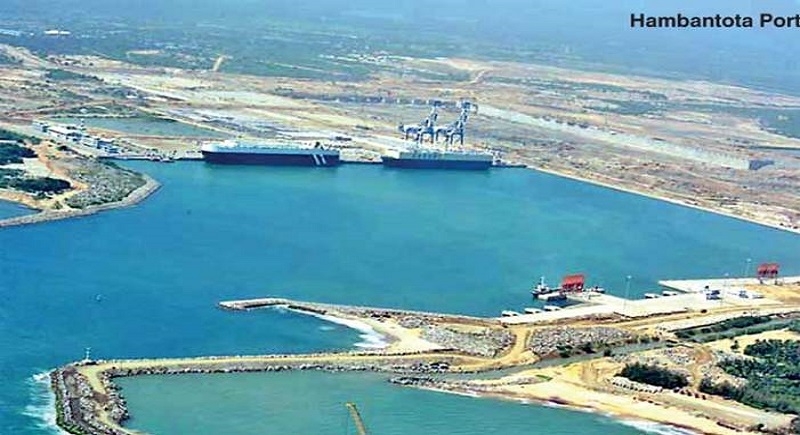
The loan amount is based on the estimated project cost and critics say it is considerably inflated and Sri Lanka has been taken for a ride, or it fell into the debt trap due to lack of foresight and temptation. China has already brought in Chinese laborers, technicians, clerks, engineers, bureaucrats etc. at all levels and built houses for their families; they have already been there for several years and will stay on for next 99 years. What a great prospect of infrastructure development for Sri Lanka, provided she gets back her land at all after 99 years! To cap it all China has built an artificial island off Hambantota, and now proposes to develop it as an entertainment center and tourist attraction. Sri Lanka objects to this new twist in the tail. Consequently, the last tranche amounting $ 585 million of the so called development loan is withheld by China promptly (See China withholds Port Deal’s Final Tranche to Sri Lanka, Times of India, June 11, 2018, New Delhi). Sri Lanka Port Authority argues that it is an infrastructure project and insists that the facility is only for maritime and port-related activity; entertainment and tourism cannot be infrastructure by any stretch of imagination. Sri Lanka has lost sovereignty over Hambantota hopefully temporarily, if not permanently. Only the year 2118 in the next century will tell.
The Issue of Sovereignty
China has been wooing India for a while to make India endorse her BRI and has recently granted her full membership of the SCO (Shanghai Cooperation Organization). However, Prime minister Narendra Modi in the last meeting of SCO stuck to his stated position that the BRI in its Pakistani avatar, the CPEC, that is, China Pakistan Economic Corridor, violates India’s sovereignty, since it runs through India’s territory of Gilgit-Baltistan, occupied by Pakistan (see India Only SCO Member to Oppose China’s BRI, Times of India, June 11, 2018, New Delhi). India has refused to endorse and raised the issue of sovereignty vis-à-vis the BRI from her own Pakistan-centric perspective. Howsoever inadvertently, she has raised a sensitive issue that threatens to take on a much larger dimension, since even in the case of Sri Lanka’s Hambantota port and its 99-year-lease, sovereignty is at stake. There is a presence of Chinese security forces and workers in Pakistan-occupied Kashmir and Chinese concentrations are springing up there as well as in Baluchistan’s Gwadar. China seems to have an unstated policy of establishing colonies of her own citizens on the land of neighboring countries. Many of China’s other smaller neighbors too have begun to feel the heat.
Myanmar
Just as the CPEC is to connect Pakistan’s Gwadar port to north-west China’s Kashgar (Xinjiang province), there is a proposal to link Myanmar’s Kyaukpyu port in Rakhine state to south west China’s Kunming (Yunnan province) by road. These two towns are already connected by an oil & gas pipe line. Kyaukpyu, though a natural port, lacks modern port facilities and both China and Myanmar wish to upgrade it into a modern harbour. Let us name this project CMEC or China Myanmar Economic Corridor that would give China a direct access to the Bay of Bengal and then onto the Indian Ocean. This would be a much-shorter bypass of the sea-route via the choke point of the Malacca straits, which can be easily closed to traffic in the event of hostility. Kyaukpyu lies 300 km due west of Myanmar’s capital Naypyidaw and would be an alternative to overworked Yangon port, whereas Kunming in Yunnan is much closer to the enormous population centers of coastal China than Kashgar in Xinjiang. As such Kyaukpyu is at least as important to China as Gawdar of Pakistan. The project would be executed by the state-backed Citic Construction Company of China.
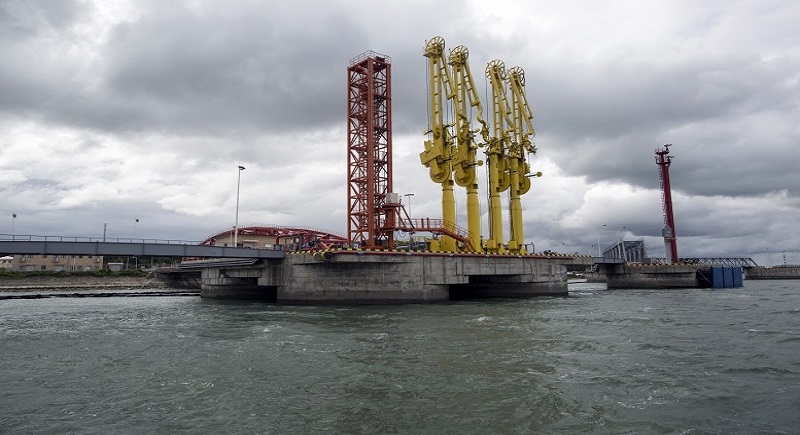
However, there is yet some distance between the cup and the lip, since Myanmar has been troubled by a second thought, as John Reed in Yangon writes, ‘Myanmar Reviews $9 billion China-backed Port Project on Cost Concerns', in the Financial Times Ltd., June 04, 2018, courtesy Reuter. Sean Turnwell, an Australian academic from the Macquarie University, Advisor to Myanmar on economic affairs, says that the project would be a valuable addition to Myanmar’s infrastructure, but it is massively overpriced; there is a danger that with a small current GDP (Gross Domestic Product), the debt burden would be a whopping 3 % of the GDP, and Myanmar may not be able to repay. Then Kyaukpyu could become a 99-year Chinese lease-hold a la Hambantota of Sri Lanka, with attendant consequences of colonization.
China is not like the Soviet Union of the yester years which offered soft loan, supplied technology and experts to advise and supervise execution, but never brought in her own laborers and technicians. The experts and advisors lived in luxurious hostels but were never accompanied by their spouses. Being a sparsely populated country, they never looked to establish colonies of their own citizens abroad. China brings in a large number of workers at various levels to ease unemployment at home and offers loans at commercial rates and inflates project costs.
China proposed a rail link from Kyaukpyu to the China border, but now Myanmar has taken that project off the table. Premier Myanmar newspaper ‘The Irrawaddy’ in its editorial on June 08, 2018 mentions that the port project is under review and expresses doubt about Myanmar’s ability to service the loan and that Kyaukpyu may go the Hambantota way. It further writes,
“Some analysts would go further and say that the projects that China is taking on around the world are rigged decisively in their favor in a concerted policy of debt diplomacy.”
Malaysia
On May 09, 2018, Dr Mahathir Mohammad’s newly formed Pakatan Harapan party swept the elections and he became Prime Minister at the remarkable age of 92. Nicholas Romero quotes Dr. Mahathir, saying in a recent Bloomberg Interview, that Sri Lanka has “lost a lot of land” because it could not pay back an exploitative Chinese loan. Obviously the reference is to the Hambantota port (Ref: China’s Brain, Malaysia’s Pain, by Nicholus Romero, June 06, 2018, The Diplomat).
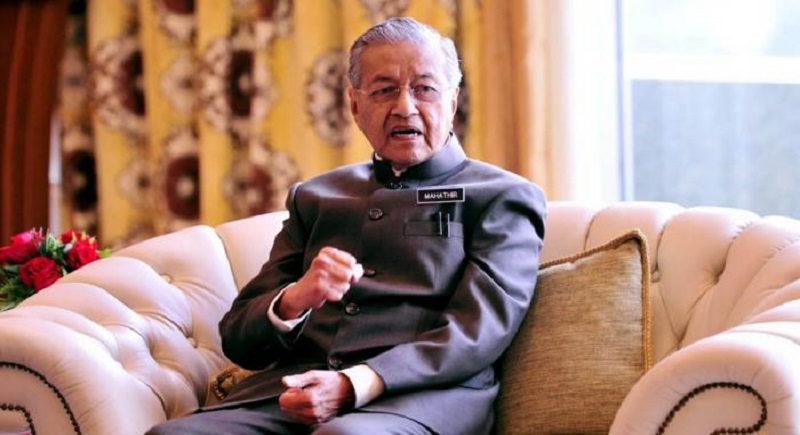
The main thrust of the article by Romero is about a software package employing Artificial Intelligence, imported from China, that is about to gain control of Kualalampur’s (Capital of Malaysia) traffic. Dr. Mahathir is not comfortable with this turn of event and he wishes to renegotiate a slew of deals his predecessor has made with China. Dr Mahathir must be aware that Malaysia’s economy is largely controlled by the large and long-settled Chinese minority community, a small fraction among them nurturing dual loyalty.
Cambodia
For the sake of maritime infrastructure Cambodia granted a 99 years’ lease of prime coastal land to China’s Tianjin Union Development Group (UDG). The name of the project is Koh Kong Project and it involves about 20% of Cambodia’s coastline and the price is only $30 per hectare. Besides, the land encroaches upon a protected National Park. The objections of environmental groups and the concerned ministry were overruled by a royal decree (Ref: A Chinese Colony Takes Shape in Cambodia, by Andrew Nachemson, June 05, 2018, Asia times, Phnom Penh). The Chinese company has imported a huge number of Chinese laborers to execute the project. Scarcely less in number is the Chinese businessmen and tourists who have poured in. The zone resembles a Chinese settlement now and what it would look like in about the year 2115 in the next century when the lease runs out is easy to guess.
Tajikistan
‘Tajikistan cedes land to China’ is a news item in BBC Asia-Pacific.pdf, 13 January 2011. 1000 square kilometer of land was ceded to China by Tajikistan along the Pamir mountain range that forms the boundary between the two countries. China is the biggest investor in Tajik economy, the bulk of the investment going to energy and infrastructure. China and Tajikistan spokesmen say they “settled an old border dispute”. An opposition leader described the deal as defeat of Tajik diplomacy and violation of the Constitution. There are picturesque valleys in the Pamirs. It is not clear if one or more of the valleys are partially or fully included in the ceded territory.
Laos
There is a highway that connects China’s Kunming to Thailand’s Bangkok passing through picturesque and mountainous northern Laos. 1640 hectares of land, extending from the Laos-China border check point along 5 kilometers of the Kunming-Bangkok highway, was leased for 30 years to Fok Hing Company of China in 2003. This is for the development of the Boten Golden City project; the first phase of the project involves infrastructure as well as hotel, casino and shopping complex. The company pays the Laos government 2 million US dollars per year and has the responsibility of re-settling displaced villagers. Chinese immigrants have acquired a dominating presence not only along the Kunming-Bangkok highway but also in the northern provinces of Laos, namely Oudomxay, Luang Namtha and Bokeo; and still their number are rising rapidly. Local government officials are uncomfortable about the demographic invasion but are pleased with the investment flowing in. No wonder they are pleased as it is well known that corruption is rife and a way of life in Laos.
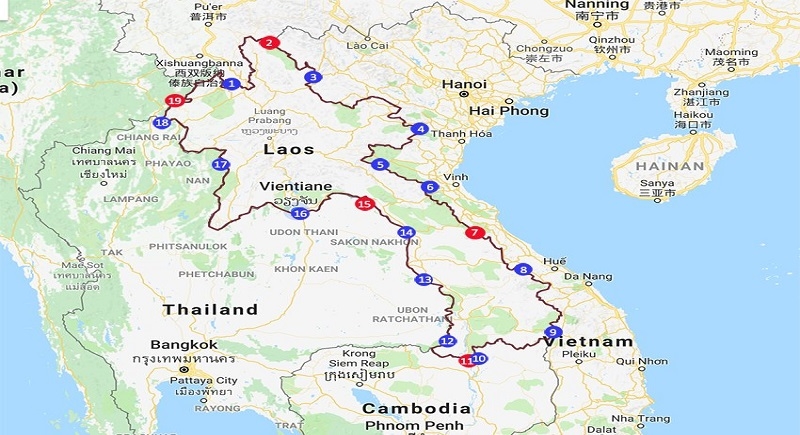
2007-2008 statistics have been made public by the Laos government, and in that year China provided all foreign direct investment (FDI) in Luang Namtha, seventy-five percent in Oudomxay, and over fifty percent in Bokeo. China has not meddled in the internal affairs of Laos so far. It wants Lao support in international affairs and is winning it, leaving the traditional close-friend of Laos, Vietnam, a little worried. Even in ASEAN meetings the Lao are beginning to echo the Chinese. China meanwhile is happy in changing border demography and gaining control of business and the economy.
Conclusion
As many pundits from Chaanakya to Marx asserted that politics and economy are inextricably intertwined, one should be weary of inviting Chinese direct investment indiscriminately in all areas of a free economy; there is a danger of political interference starting with foreign affairs. This is already happening with Laos and Cambodia. Cambodia’s voice against China’s breach of international law and unilateralism in taking over archipelagos in the South China Sea is muted. Laos has started supporting the one-China policy against Taiwan, and distancing herself from long-time ally Vietnam. However, spread of economic control will likely lead to political control eventually.
China, of course, would never admit to the undertone of colonialism with regard to its Belt and Road Initiative. But symptoms are there but no diagnosis as yet; this form of colonialism is not so hard-edged and couched in a different language and harder to recognize. Hence I call it crypto-colonialism. At the close of the 19th century the European colonial powers used to speak of the savages of Asia and Africa to be the ‘white man’s burden’ and professed a civilizing mission. Now China declares her mission to develop the infrastructure and connectivity of the nations of Asia and Africa; but profit for her state-owned and private companies must be ensured under all circumstances.
